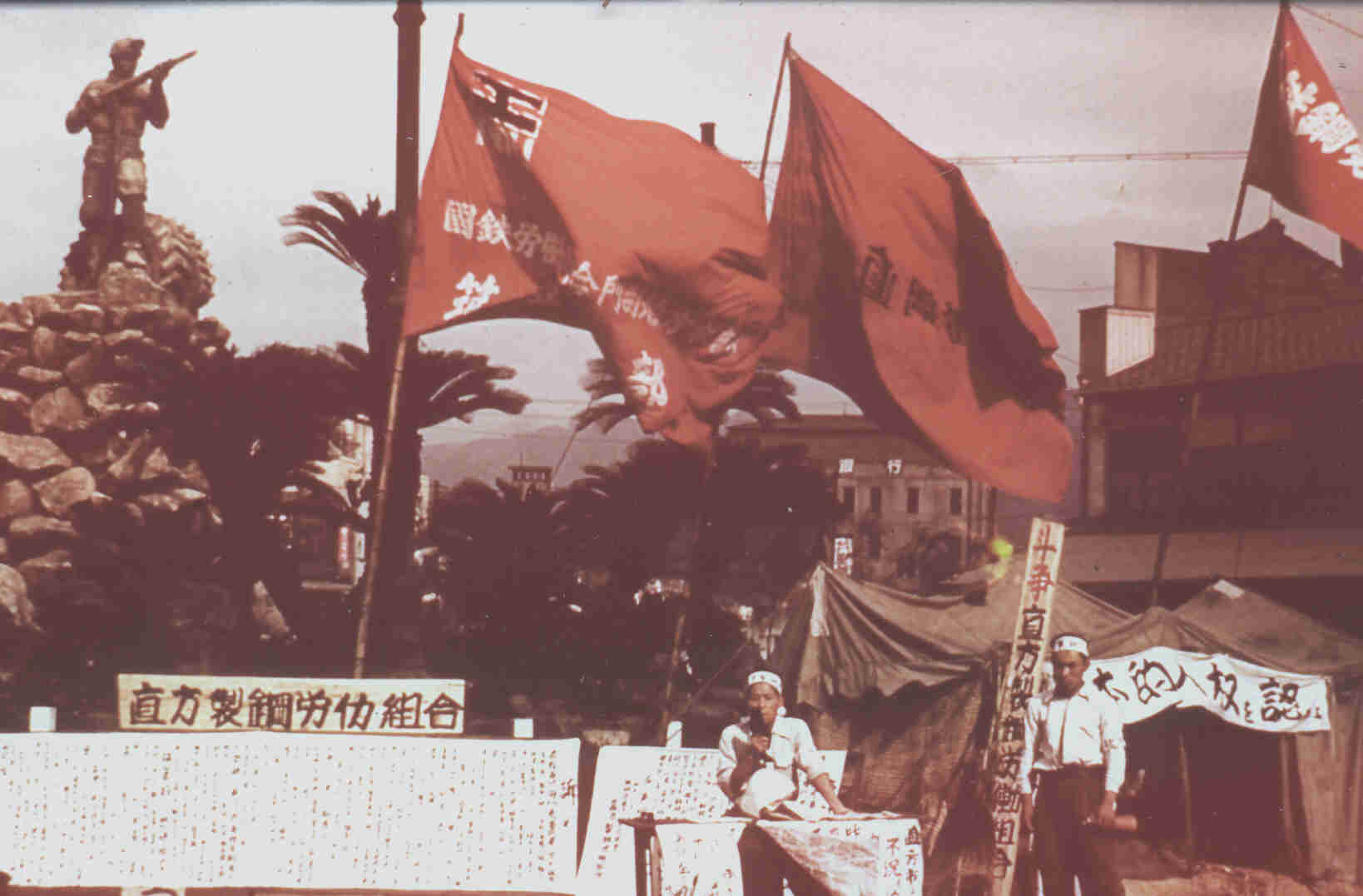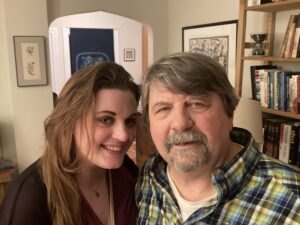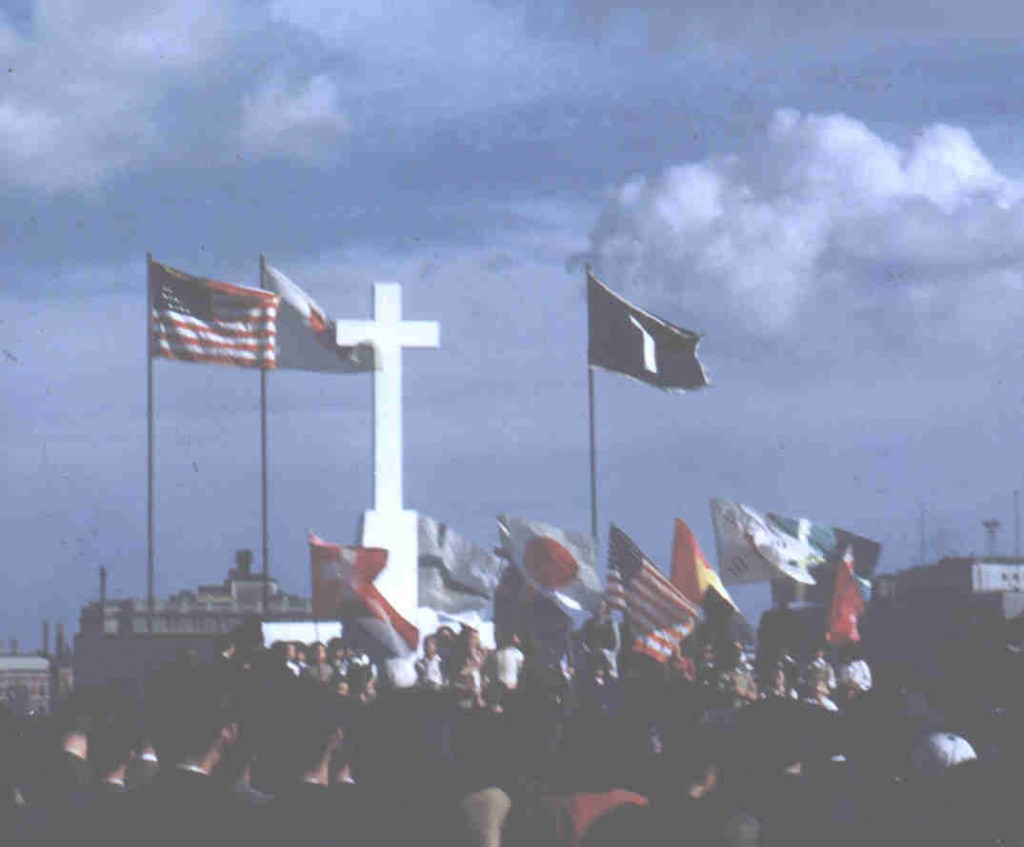
This story was written in 2002 at the beginning of the Iraq War and first published in Killing the Buddha, the great website on everything religious edited by Jeff Sharlet. It ran as the United States was about to invade Iraq and install a government that the Bush administration said would create a vibrant democracy in the center of the Middle East, just as Japan supposedly did in the period after World War II. But like Iraq, the truth about Japan’s political culture was elusive and deeply distorted by the Bush administration and the neoconservative ideologues who drove its foreign policy. My story focuses on the contrast between the visions of General Douglas MacArthur – that Japan, by harnessing Christianity, could become an anti-communist bulwark in Asia – with the irony that many Japanese during the U.S. Occupation embraced leftist ideals and firmly opposed America’s wars in Korea and, later, Vietnam. Here’s how it appeared in KtB back in 2003.
American Missionaries in Cold War Japan
BY TIM SHORROCK
In November 1945, two months after he accepted the surrender of Japan on the deck of the USS Missouri, General Douglas MacArthur sat down with a delegation of American clergy at his headquarters in the Dai-Ichi Insurance Building in downtown Tokyo. The four churchmen had come to Japan to rekindle a dialogue with Japanese Christians cut short by World War II and were the first Americans in civilian dress to enter postwar Japan. MacArthur, a lifelong Episcopalian, asked them to send 1,000 missionaries to Japan as soon as possible. “Japan is a spiritual vacuum,” he said. “If you do not fill it with Christianity, it will be filled with communism.”
So began one of the strangest episodes of the Cold War: MacArthur’s attempt to harness Christianity in his mission to transform Japan into an American-style democracy. Over the next five years, over 1,500 American missionaries arrived in Japan in answer to the call from MacArthur and a recruitment drive launched by the mainline American churches. Most of them were young people who came to Japan fresh from college, bible school or the military, filled with visions of remaking Japan and providing spiritual guidance and sustenance to a defeated nation.
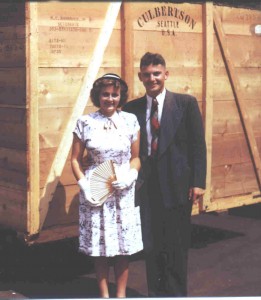
Among them were my father, a former Naval officer from Seattle who had learned Japanese during the war, and my mother, a divinity student from Connecticut with a passionate interest in China. They went to Japan in August 1947 on a three-year assignment for the Disciples of Christ and remained in Asia for most of the next 25 years.
Going by the numbers, MacArthur’s crusade was a miserable failure. In the political turbulence after World War II, millions of Japanese joined the reborn Japanese Communist Party and cooperated with communists and leftists to organize labor unions and demonstrate against the spread and testing nuclear weapons. Fifty years after the war, the number of Japanese who call themselves Christians remains a little over one-half of one percent of the population, the same level it was before Pearl Harbor.
But judged on human terms, the American missionary influx after 1945 helped heal the wounds of war and exposed the defeated Japanese to a new kind of American, neither businessman or soldier, willing to forgo the comforts of home to share in the uncertainties and poverty of postwar Japan. “They were young and idealistic, and identified with Japan,” recalls Kiyoko Takeda Cho, a prominent Christian intellectual who lives in Tokyo. “They represented not the ruling country, but came for reconciliation. That attitude was very much appreciated, not only by Christians but also non-Christians.”
Indeed, what was unique about the post-World War II missionary movement to Japan – and what sets it apart from other missionary campaigns of the past – was the dominant role of the “ruling country” in Japanese affairs after 1945. Unlike Germany, which was divided into four zones by a coalition of allied powers, Japan was under direct control of the U.S. Occupation Army and the Supreme Commander of Allied Forces Pacific, or SCAP. From the first day of the occupation, General MacArthur had a mandate from President Truman to take whatever actions he deemed necessary to free Japan from the ideological grip of the “vicious and cruel savages” (Truman’s words) who led Japan into the war. To MacArthur, this was a golden opportunity to export Christianity, American-style.
The general had “something of a messianic complex – a consciousness of being called of God for the hour and a confidence that God was on his side!” wrote William P. Woodward, a prewar missionary to Japan who wrote “The Allied Occupation of Japan and Japanese Religions,” the only history in English of MacArthur’s policies towards religion.
According to Woodward, who directed the Occupation’s Religious Research Unit, MacArthur viewed Japan’s traditional religions as inferior, even dangerous, schools of thought, and Christianity as its only salvation. Democracy, MacArthur once said, would “never success in Japan until the country is Christianized” because the Japanese people “are saturated with Shintoism and Buddhism, neither of which, in my estimation, is up to what we need in making better and nobler human beings.” What Japan really needed was a “spiritual redrucescence and improvement of human character that will synchronize with our almost matchless advance in science art, literature, and all material and cultural development of the past two thousand years.” That elegant but overblown rhetoric deeply impressed President Truman, who quoted those words in his official letter of endorsement the American clergymen carried during their visit to Japan.
In a sense, the story of the American missionaries who went to Japan after World War II is the story of the occupation itself: a grand social experiment, contradictory, marked by spectacular triumphs and dismal failures – and unlikely to be repeated again.
The Misery of Postwar Japan
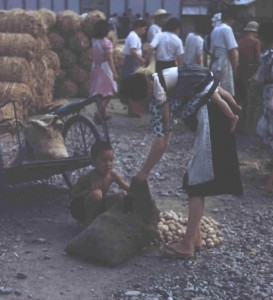
As MacArthur spoke to the American church representatives that day in 1945, Japan was still a scene of misery and destruction after losing its first war in 5,000 years. Over 160 cities, including the great industrial centers of Tokyo, Osaka, Yokohama, Kobe, Hiroshima and Nagasaki were in ruins, the last two flattened and poisoned by the world’s first atomic weapons. Throughout Japan, food was scarce. As defeated Japanese soldiers came back from their outposts in China, Korea and the South Pacific, the hungry, exhausted civilians left at home ached for rice, vegetables, meat, sustenance.
The desperation was keenly felt by the American church leaders. In their first meetings with Japanese Christians, they encountered a confused, dispirited community ashamed of its complicity with militarism, bitter at the terrible American firebombing that destroyed 457 churches and killed countless Japanese civilians, and desperate for outside assistance and relief. “We are shocked and hurt and humbled and miserable,” a Christian women’s leader told them.
From the beginning, the U.S. churches received enormous help from the occupation.
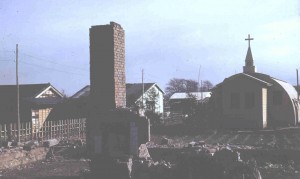
The relationship began when the Horton delegation flew to Tokyo on a U.S. Army transport plane and, in Dr. Horton’s words, were “accorded the most unusual privileges by the Army both in transportation and in billeting.” In the fall of 1945, Army Colonel Ivan Bennett, MacArthur’s chief of chaplains and Dr. Horton’s escort in Japan, arranged to have thousands of bibles shipped to Japan. Bible exports got another boost in 1949, when MacArthur personally endorsed the bible to the Japanese public (writing on official SCAP stationary, MacArthur informed the Japanese that the Bible was the “chief cornerstone of all liberty, the basis of fair and honest government, and the foundation for a true and living faith in God Whose promises never fail.”).
During the seven years of the occupation, missionaries were treated as a virtual auxiliary to the occupation, a policy that, according to Woodward, “added immensely to the prestige of the Christian churches and unquestionably resulted in special attention being paid to them and the needs of the missionaries in the re?establishment of their work.” Starting in 1948, mail for the 38 American denominations represented in Japan was processed at Army Post Office 500 in a bank building seized by the occupation in the Maranouchi section of Tokyo.
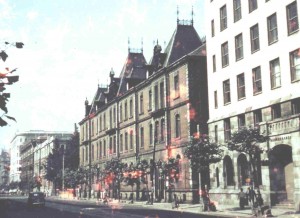
Others obtained shopping privileges on U.S. military bases or the Army’s Post Exchange in the old Matsuya Department Store on the Ginza. When missionaries traveled by rail, they bought their tickets at the U.S. Army’s Railway Transportation Office. My mother recalls her discomfort at being forced to ride on the special rail cars set aside for occupation personnel, especially when the regular cars used by Japanese were so crowded. At their local train station, Kamagome, MPs would direct my mother and any other American into the occupation cars recognized by the white stripe down the side. “It took people a long time to accept the fact that we should buy tickets,” my mother says. “That was the first really difficult thing to do – how to disassociate ourselves from the occupation.”
Despite the misgivings of individual missionaries like my mother, the spiritual goal of the churches and the political agenda of the occupation intersected on many levels throughout the postwar period. In 1953, top U.S. occupation officials helped establish International Christian University, a college and graduate school started by missionaries that now ranks as one of Japan’s most prestigious private schools. MacArthur himself served as honorary chairman of the ICU Foundation, which raised the $500,000 used to buy the school from the Nakajima Aeronautical Research Company.
To convince Americans to contribute to ICU, MacArthur and other officials dangled the specter of a communist Japan before their wealthy donors. “If Stalin can bring German and Japan into the Communist orbit, he will have won the Cold War and the United States, lying midway between Europe and Asia, will be isolated,” said William L. Clayton, a former State Department official and ICU board member, in a speech to prospective ICU donors in Houston in April 1950. Therefore, America “must lend a helping hand to the liberal forces of Japan in a spiritual and moral sense…The establishment of the International Christian University in Japan is a step in this direction.”
It could also be argued that the millions of dollars donated to Japan by the American churches supported American policy in Japan by serving as a safety net for people suffering from the fallout (sometimes literally) of the Cold War. In 1954, the churches distributed clothing and food to families of the fishermen suffering from radiation poisoning spread by the fallout from the American hydrogen bomb test over Bikini Island.
That test, which caused the death of three fishermen and the destruction of thousands of pounds of fish caught in the Pacific waters near Bikini, sparked a nationwide protest movement in Japan against nuclear weapons. But the Eisenhower administration refused to pay indemnities, leaving that job to the missionaries.
Another big missionary project in the early 1950s provided food and clothing to 200,000 coal miners who lost their jobs when the Japanese government, under strong pressure from American oil companies, switched its energy use from coal to oil and cracked down on the militant unions in the coal fields. “It has never been easy to disentangle the theological, humanitarian, and political motives behind specific policies” of the missionaries, wrote James Phillips, a former missionary to Japan, in his study of postwar Japanese Christianity, From the Rising of the Sun.
The special treatment given the missionaries outraged many Japanese, particularly because MacArthur’s open endorsement of Christianity seemed to brazenly contradict the occupation’s goal of separating the state from religion. Starting in the fall of 1945, officials from the Religious and Cultural Division of the Occupation’s Civil Information and Education Section fanned across Japan to force compliance with occupation directives on religion.
In December 1945, the occupation’s famous Shinto Directive formally severed the relationship between the Japanese state, the Shinto religion and state-encouraged Emperor worship. It also declared that Japanese religion was not to be used “to conceal ultranationalism and militarism.” American supervision of Japanese religion was so deep that occupation officials got involved in internal disputes at Buddhist temples. In one amusing case recounted by Woodward, U.S. Army officials ruled illegal a strike by leftist Buddhist monks against their abbot, who had been an ardent supporter of the war.
By 1946, the contrast between the occupation’s support for Christianity and its treatment of Japan’s other religions had generated furious protests from Buddhist and Shinto groups.MacArthur totally ignored them. In frustration, some U.S. officials felt compelled to show an “even hand” in their dealings with other religions. They tried to balance their pro-Christian policies by allowing Ruth Sasaki, a Zen Buddhist scholar, to enter Japan for a year of study and allowing a Jewish rabbi into the country. But these pathetic attempts at fairness were undercut by MacArthur himself. In 1947, when the Christian leader of the Socialist Party, Tetsu Katayama, was elected Prime Minister of Japan, MacArthur declared the election a sign of “human progress” that proved Christianity was “an invincible spiritual barrier” against the “infiltration” of foreign ideologies.
“Commendable as (MacArthur’s) motive may have been,” statements like these were “a stark reminder that the Japanese extremists did not have any monopoly when it came to using religion, including Christianity, for the achievement of political ends,” Woodard wrote in a sardonic footnote to his book.
Christians vs Communists
Despite their tremendous advantage in resources, the American missionaries and their Japanese colleagues found it difficult to compete with the communists. In the wreckage of postwar Japan, the reborn Japanese Communist Party filled a political and social void no other institution could match. The party’s courageous opposition to the rise of Japanese militarism and the emperor system gained the communists immense popularity and prestige among Japanese workers and students. That record of resistance contrasted sharply with most Japanese religious institutes, including the Christian churches, which had united in 1941 under government decree and offered only cursory opposition to Japanese militarism.
Ironically, the communists got their biggest break from MacArthur himself. The general moved swiftly in the first months of the occupation to demilitarize and democratize Japan by freeing political prisoners, lifting controls on freedom of speech and the press and abolishing prohibitions against labor unions. Most of the communists released from military prisons after the war had been active in the labor movement, and quickly threw their energies into organizing unions in the huge industries developed since Japan’s militarization of the 1930s.
In the first year after the war, the number of labor unions rose from zero to 12,000, with a total membership of 3.7 million. “These revolutionary steps gave a tremendous encouragement to the communists, and also gave the entire nation an impression that GHQ (MacArthur’s headquarters) is backing up the communists,” wrote a Japanese Christian professor in a 1950 report on communism for Dr. Ralph E. Diffendorfer, the longtime Director of Overseas Missions for the Methodist Church.
According to this anonymous professor, whose remarkable study I found in the archives of International Christian University in Tokyo, the communists’ strident condemnations of Japanese capitalists and landowners won the allegiance of millions of Japanese left homeless and destitute by the war. “Communism is easy to understand, and meets the present need more than any other thought,” he wrote. “It is running into the minds of the people like a flood…One of the immediate objectives of the Communist Party is to abolish the private property system, and this war made the majority of Japanese propertyless.”
By 1947, American political and military leaders concluded they were losing that battle for Asian hearts and minds, not only in Japan, but in Korea, China and Southeast Asia as well. As tensions with the Soviet Union escalated in Europe and Mao Tse Tung’s armies began pounding Chiang Kai Shek’s nationalists, the United States went on an offensive against what it considered the global forces of communism.
Japan, the largest and most powerful nation in Asia, quickly became the linchpin for the U.S. Cold War strategy. In 1947, after two years of liberalization, the occupation “reversed course;” instead of political reform and demilitarization, its efforts turned towards rebuilding Japanese industry. Restrictions on the zaibatsu, the huge banking and manufacturing combines that were an essential part of Japan’s war machine, were eased. In September, MacArthur outlawed a nationwide general strike called by the communists and their allies against the occupation policies. Over the next year, in a massive “red purge,” hundreds of Japanese labor leaders and communists were either arrested or fired from their jobs.
These momentous events established the basic postwar framework of U.S.-Japanese relations that still remains, despite the end of the Cold War and the weakening and eventual collapse of Japan’s ruling Liberal-Democratic Party.
The Korean War “Boom” and the Decline of Christianity
In 1950, the Cold War turned red hot when North Korea sought to liberate the south from its pro-U.S. government. The massive U.S. intervention in Korea that summer intensified the war but sparked three straight years of astonishing economic growth in Japan. Fueled by huge purchases by the U.S. war machine, the Japanese steel, automobile and munitions industry were revived and quickly surpassed prewar levels. Over $300 million in U.S. procurement orders were placed in 1950, roughly 40% of Japan’s exports for the year; over the next five years, they reached $1.62 billion. The procurement orders made many Japanese industrialists rich and laid the foundations for the rapid export?led growth of the early 1960s. For the first time since 1945, Japanese consumers finally had money in their pockets to spend on luxuries like washing machines and automobiles.
But despite the economic benefits brought by the war, many Japanese were horrified by the terrible human toll of the Korean War. To both Christians and non-Christians, the massive American bombing campaigns in North Korea and America’s use of Japan as a military base clashed with their image of a benevolent America that came to Japan to lift it up from its terrible defeat. Japanese intellectuals, communists and Christian leaders joined together to oppose the war and the bilateral military agreement, signed in 1952, that allowed the United States to retain its military bases on Japanese soil. The U.S. encouragement of conservative Japanese leaders such as Prime Minister Nobushike Kishi – a convicted war criminal who had administered Japan’s colonial development of Manchuria – added another element of mistrust.
“For many idealistic Japanese who had assumed that the United States was devoted to pacifism, the Korean War came as a shock,” wrote Jim Phillips, the historian of Japanese Christianity. They saw the United States “as a nation not wholly dedicated to the pacifist principles that it had championed in the drafting of the Japanese peace constitution, but a country that was willing to go to war to prevent the extension of communism in the Far East.” From 1950 onwards, “there was a marked decline of Japanese interest in Christianity, the major religion of America,” he wrote.
The Cold War also brought a new wave of missionaries to Japan that changed the makeup of Japan’s Christian community. The new arrivals were fundamentalist and rigidly anti-communist and soon outnumbered the liberals by nearly four to one. Many of them had arrived in Japan after fleeing communist?controlled areas in China and Korea. Others were recruited from American denominations founded during the Cold War atmosphere of the late 1940s and early 1950s to counter the liberal bias of the mainstream Disciples, Methodists and Presbyterians.
The conservatives soon began to clash with the liberal social reformers who came to Japan in the 1940s. Long before I ever heard the term religious right, I was acutely aware of the deep conflicts between missionaries, like my parents, who stressed the importance of social change and tolerance towards other religions, and those who insisted on a literal interpretation of the Bible and believed that anybody who wasn’t saved was condemned to a life in hell.
From an early age, I remember seeing fundamentalist preachers from churches with names like Far Eastern Gospel Crusade, The Navigators and The New Tribes Mission driving around Japan in cars decorated with images of Jesus and the American flag, blending their evangelism with warlike sermons against the evils of communism. A decade later, the conflicts inside the missionary community between the social reformers and anti-communist evangelicals exploded over the Vietnam War: liberals like my parents opposed U.S. involvement, while the fundamentalists supported it.
During that era, Japanese Christian institutions were also ripped apart by struggles between conservatives and radicals opposed to the Vietnam war and American dominance of Japan. ICU, where my father later worked as an administrator, became a temporary headquarters for the Japanese student left after police assaulted Tokyo University in 1969. When I was in high school, student radicals seized ICU twice, raising the red flag over the chapel and holding mass trials of professors that resembled the Cultural Revolution in China. In a way, the political lines drawn in 1950 were never really erased.
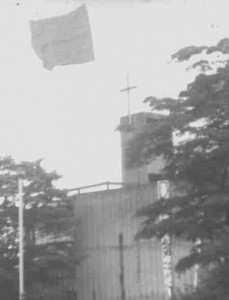
Christians Apologize for World War II
The American missionary movement peaked in 1964, the year of the Tokyo Olympic Games, when 1,355 were registered by the Interboard Committee that administered their work. The gradual reduction in the missionary presence after that came about largely on the initiative of the Japanese churches. According to David L. Swain, a former Methodist missionary who served in Japan from 1953 until 1992, many Japanese Christians began to feel they had developed an unhealthy emotional and financial dependence on the American churches.
“Anyone who came early were benefactors for people who were flat on their backs,” said Swain, who is now retired and living in North Carolina. “The Japanese could not remove from their eyes the filter of seeing them as benefactors.” That filter, he said, created a kind of “parent-child relationship” between Japanese and American Christians, making it difficult for the Japanese to argue or express differences with their benefactors, he explained. But by the late 1960s, that situation had changed. One of the first open conflicts between the Japanese churches and their American sponsors took place in 1969. That year, an entire group of missionaries from the conservative Missouri synod of the Lutheran Church were pressured to leave by their Japanese members. The reason, according to several accounts, had to do with the American Lutherans’ refusal to allow a Japanese pastor to take over a Japanese congregation.
The turning point in the Japanese Christian struggle for independence was their internal dialogue about the Japanese churches’ wartime legacy. Although many Japanese Protestants and Catholics suffered as a result of their resistance to Japanese militarism and emperor worship during the 1930s and 1940s, the church as a whole was not an obstacle to fascism and at times supported Japan’s overseas expansion. In colonial Korea, Manchuria and Taiwan, Japanese churches dispatched missionaries who frequently worked side by side with Japanese companies and the military.
The Kyodan, the United Church of Japan, was formed in 1941 under a directive of the military government. During the war, its top officials participated in Shinto ceremonies at the Ise Shrine praising the war effort. At the time, church leaders argued that the Kyodan would have been banned and driven underground if they had not participated in such events. But by becoming part of the imperialist establishment, the churches left a legacy of wartime complicity that was not forgotten in those countries trampled by the Japanese military.
In 1966, after months of internal debate, the Japanese Kyodan issued a “confession of wartime guilt’ that admitted the churches’ complicity with militarism and pledged to address the mistake by working in solidarity with struggling Christians in Korea, the Philippines and other countries still feeling the affects of World War II. The confession was “like lifting a monkey off your back,” said Swain. “It was a liberating act.”
Around that time, Japan’s counterpart to the National Council of Churches began a 10-year program to reduce overseas mission funds and separate its operations from the American church boards. From the early 1970s on, the only missionaries who came to Japan came under a specific request from the Japanese, and U.S. churches began to allow their people to retire without replacing them. The number of missionaries from the mainstream American churches has now dwindled to less than 100; in their place have come hundreds of Mormons and representatives from smaller fundamentalist denominations.
1994: My last time in Japan with both my parents
In 1994, I spent two weeks in Tokyo with my parents, who are retired and living in a community of former ministers and missionaries in Southern California (my mother died in August 2001). We revisited old friends and tramped around old haunts; it was the first time we had been together in Japan since we left for good in 1969.
One rainy afternoon, we visited the Satos, a Christian family we had known during our years in Tokyo. We talked about old times, laughed over pictures of our families together long ago and consoled them about the death in 1993 the family patriarch. Then the mother, who spent much of her adult life working as a counselor to Japanese women married to foreign men for Tokyo’s Metropolitan Government, began to chuckle when she told us about her husband’s funeral. She said the family decided to hold the services in their home and invited many people in the surrounding neighborhood in a southern suburb of Tokyo. But afterwards, several neighbors confided they were grateful the services weren’t in a church, where they said they would feel uncomfortable. “They were very straight forward about it,” she said. “That was unusual.”
That anecdote underscores a truism about Christianity in Japan: despite its years of influence, the Christian religion is still considered foreign to Japan. Buddhism, which was introduced by the Chinese and, some say, the Koreans, remains closely integrated with Japanese life, as does Shinto, which in recent years has regained the state sponsorship it enjoyed during World War II. That “outsider” status limits the influence of Christianity, which still claims the allegiance of less than one-half of one percent of the population — the same level as 1945.
Does that mean that the American missionary invasion was a failure? If looked at in numbers, perhaps; maybe MacArthur and his religious advisers misjudged the Japanese hunger for spiritual sustenance in much the same way that later generations of American businessmen would mistake the Japanese taste for capitalism with an interest in open markets.
But fault may also lie in the social status of Japanese Christians. Rinzo Shiina, an uneducated worker who was jailed as a communist during World War II and later converted to Christianity. wrote in 1959 that most Japanese Christians came from the intelligentsia or the upper class and simply could not communicate with a population that was predominantly poor and working class. “Japanese Christianity has had no language with which it could speak directly to the Japanese laborers and masses,” he wrote. “In other words, Christianity in Japan has been the property of a few intelligent people. It may not be a mistake to say that Japanese Christianity has been unwilling to get rid of such a stigma…It may be said that Christianity floats unattached on the surface of present day Japanese society.”
Still, in spite of its low numbers of believers, Christianity and Christian institutions remain influential in Japan. Christian schools and universities, such as Doshisha in Kyoto and ICU in Tokyo, attract thousands of Japan’s best and brightest students every year. Christian hospitals and clinics are everywhere. Despite the small numbers of people who call themselves Christian, millions of Japanese are interested enough in Christian teachings to make the Bible an annual bestseller. Christian writers also carry a weight far beyond the number of believers. Rinzo Shiina’s novels, for example, have been bestsellers. More recently, the late Catholic writer Shunsaku Endo, author of Silence and other works that chronicled Japan’s first Christian communities, became one of the country’s most popular writers.
And as an institution outside the Japanese body politic, the church plays an important function as a voice for the oppressed and a refuge for dissidents, Christian and otherwise, outside the political mainstream. Christian groups have been in the forefront of struggles to support the rights of Japan’s Korean population and the growing numbers of Asian immigrants in the country. Along with the Japanese Communist Party, Japanese Christians remain the staunchest critics of Japan’s emperor system, which has been used by rightists and conservative politicians as a vehicle for ultra-nationalism. Christians have also opposed the blatant use by the Japanese government of such remnants of State Shinto as the Ise Shrine, where Prime Ministers troop annually to remember Japan’s war dead. Christian women’s groups have established hot lines for abused wives and immigrants from the Philippines and elsewhere who are brought to Japan as entertainers and then forced into lives of prostitution.
“Especially locally, the churches play an important role,” said Reiko Inouye, the editor of Ampo, a radical magazine published by a collective of activists who got their start in Japan’s powerful antiwar movement of the 1960s. Sitting in her crowded office in the Kanda area of Tokyo, Inouye recalled many instances when the Japanese left had serious political differences with the church. But she said the Christian community is extremely important in a country where conformity is valued above almost anything else. Throughout Japan, she said, there are people who oppose the emperor system but are afraid to make their views known. But when a local Bishop or minister in a town speak out, “at least the church can provide some space for that movement,” she said. The church has also provided space for people left out by the sectarianism in Japan’s peace movement, which has historically been divided between groups loyal to the Socialist and Communist parties.
Mrs. Cho, the Christian intellectual, said her greatest problems with other Christian activists is a “kind of absolutism,” a Christian radicalism that often translates into a “very exclusive, self?righteous” attitude towards other Japanese as well as sectarianism within the church itself. On the other hand, she told me, Christianity has brought to Japan the “true meaning of human values,” the guilty conscience, humility, the desire to share with others – values that are of critical importance in today’s world of affluence and wealth. “The Japanese spirit is still very poor,” she said. Maybe MacArthur was right all along.
